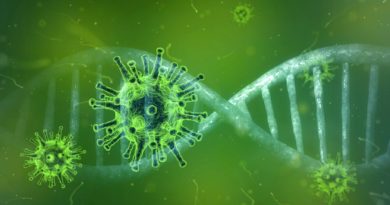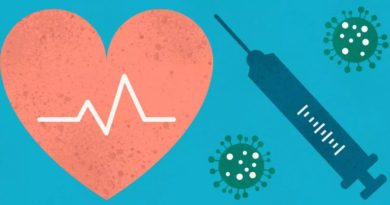Coronavirus has been with us for a year. Here’s what we still don’t know

When China first reported cases of coronavirus to the World Health Organization on December 31, 2019, it was described as a mysterious new strain of pneumonia. It didn’t even have a name.
Within two weeks, Chinese scientists had identified the virus’ genome sequence, the genetic code that makes up the virus. Within three weeks, the first test kits had been created and then shared by the WHO. And just over 11 months since the virus was reported to the WHO, the first people were vaccinated, making the shots the fastest vaccines ever developed.
The speed at which we’ve learned about coronavirus is unprecedented and scientists say we already know a remarkable amount.
But one year on, with more than 81 million reported infections and 1.7 million deaths around the world, there’s still a lot we don’t know about Covid-19.
Those unknowns range from the basics — such as how the virus started — to the more complicated questions, including how will this pandemic end?
“We have learned a tremendous amount, but in terms of understanding anything in any real detail, we’ve got miles and miles to go,” said Maureen Ferran, an associate professor of biology at Rochester Institute of Technology. “This is going to keep virologists and public health officials busy for decades.”
Where coronavirus originated from
As governments raced to find a vaccine for the virus, one of the most basic questions fell off the public’s radar: what is the origin of the virus?
The virus’ origin has been dogged by confusion and conspiracy theories. Initially, the virus looked like it was connected to a Wuhan market that sold live animals, but a Lancet study published in January found that one third of the initial patients had no direct connection to that market.
Some, including US President Donald Trump, questioned whether the virus had been released after being studied or created in a Wuhan lab. Scientists say there is overwhelming evidence that the virus originated in the wild, and say the closest known relatives to coronavirus are too genetically different from Covid-19 for it to have been leaked and subsequently caused the outbreak.
Studies have found evidence that the virus may have been circulating in United States and Europe in December 2019, months earlier than first thought. Chinese state media has pushed the narrative that the virus may have originated outside of China.
But while Peter Collignon, a professor of microbiology at the Australian National University, says it’s quite likely that the virus was circulating in the US and parts of Europe before the first cases in those countries were diagnosed, there’s nothing conclusive to show that the virus originated outside of China. The World Health Organization, which is investigating the origin of the virus, will look into whether Covid-19 could have been circulating in China before the first cases were identified in December.
Despite the plethora of conspiracy theories, there are a few things that most scientists agree on. Covid-19 is a coronavirus, a type of virus that is responsible for everything from the common cold, to SARS. It’s zoonotic, meaning it originally came from an animal. Some studies point to bats as the likely vectors, which are known to carry coronaviruses. And most scientists still think the virus transferred to humans in China, as that is where the first cases were identified.
But we still don’t know where the virus first passed to humans, and if it transferred through another animal intermediary, such as a pangolin or a civet cat, before infecting humans. Those are questions we may never answer, says Ferran — after all, in the more than 40 years since Ebola was discovered, scientists have not been able to definitively say which animal it came from.
Why it affects some people more than others
When Covid-19 was first identified, it was seen as a respiratory illness. But as the months have gone on, a range of symptoms and complications of the disease have become apparent.
Many people lose their sense of smell. Some people vomit or have diarrhea, or get discoloration on their fingers or toes. Some even have impaired cognition or brain damage.
We now know that even those who recover from Covid-19 can experience long lasting effects, including anxiety, brain damage and chronic fatigue. A study published in the British Medical Journal in August found that around 10% of patients had a prolonged illness from Covid-19 lasting more than 12 weeks.
But scientists don’t know how long these effects from Covid-19 last — and they can’t really explain why it is that some people suffer more than others.
A letter published in the journal Annals of Internal Medicine in November described a case where two 60-year-old identical twin brothers were both infected with Covid-19 had very different outcomes. One twin was released from hospital after two weeks without any complications, the other was transferred to intensive care and required a ventilator.
The case demonstrated what researchers have been observing for months: there seems to almost be a randomness in how severely coronavirus affects different people — although there are some people who do have a higher risk for severe illness due to existing chronic conditions or old age, among other factors.
“We all have slightly different genetics,” Collignon said. “Often for reasons we don’t fully understand, some people cope with infections better than others.”
That’s also true across demographics. For months, scientists have observed trends showing older people and men tend to be more vulnerable. Scientists know something about why children tend to have less serious infections from coronavirus — they have fewer ACE2 receptors in their noses, and these receptors are how coronavirus gets into our cells. But they can’t really explain why older people have such a high death rate from coronavirus — much higher than from the common flu.
“What is it about age that makes you so much more susceptible to having disease?” Collignon questioned. “We’ve got the data and we know it’s true … but I don’t think we’ve got all the answers for that.”
How coronavirus is spread
Back in January, China confirmed that the virus could spread from human-to-human. But a full year on, there’s still debate over exactly how that happens.
Scientists say the key way the virus is spreading is though droplets which are sent into the air when someone coughs or sneezes. These droplets fall to the ground after one or two meters, and masks can help prevent their spread.
But some scientists argue that the virus is also being spread by aerosols — much smaller particles that can stay suspended in the air for hours and travel long distances. That would be a problem, says Collignon — cloth masks can’t protect against aerosol transmission.
Collignon says that while aerosol transmission could be happening, it seems that most infections are caused by droplets. Instead, he thinks much more focus needs to be placed on the effect of air flow indoors — a recent South Korean study found virus droplets could still infect people more than two meters away due to air flow from an air conditioning unit.
There are other questions, too. According to Ferran, it’s unclear what dose of coronavirus is needed for someone to get infected. Children may be more likely to be asymptomatic, but there are still no definitive answers on how much children are involved in spreading the virus.
All of these questions are important as they have implications for what policy approaches governments take. If children are involved in spreading the virus, then it makes sense to shut schools — and conversely, if they aren’t involved in spreading the virus, then shutting schools could be having a large impact with limited pay off.
How long someone is immune
In August, researchers from the University of Hong Kong said a 33-year-old man had been reinfected with Covid-19 — 4.5 months after he was first infected.
That seemed to confirm what some people were afraid of — that it was possible to get infected twice.
The good news, according to Collignon, is that while some people can get infected twice, “it’s such a rare event that you get put in a medical journal.” Around 99% of people infected with the virus don’t seem to get infected again for at least six months after they are infected, Collignon said.
The big question, then, is how long does natural immunity from the virus last? Scientists can’t answer that yet as the virus hasn’t been with us for long enough.
The same is true for the vaccine — we don’t know how long the immunity for that lasts either.
Scientists assumed that the vaccine would provide some form of immunity for a number of years, said Collignon. “But the bottom line is, we don’t know yet.”
At the moment, the coronavirus vaccines look like they are more effective than the influenza vaccine, which needs to be administered every year.
Scientists are optimistic about the vaccine and think the chance of long-term side effects is unlikely. As Jonathan Stoye, from the Francis Crick Institute in London, puts it: “I think the risk is much greater from the virus than the vaccine.”
But that doesn’t mean there aren’t still questions about the vaccine beyond how long immunity lasts. We don’t know whether the virus will mutate, in a way that will render a vaccine ineffective. The longer we take to vaccinate large swaths of the population, the more opportunity it has to mutate, said Ferran. And some of the new vaccines employ mRNA technology, which has never been used widely before — raising questions about whether the immunity from those vaccines will last for the same length of time as traditional vaccines.
When the pandemic will be over
All of these questions have implications for the big question: when will this all end?
Many around the world are pinning their hopes on the vaccine, but even that isn’t a quick fix. It will likely take years to vaccinate the majority of the world’s population — something that would be necessary to stop the spread — and polls show that some people may not be willing to be vaccinated. Even if people do, the vaccine isn’t a silver bullet.
“I think the vaccines are the way to go. But people seem to have a view of it will give me 100% protection — no vaccine does that,” Collignon. And even if someone is vaccinated, scientists don’t yet know whether it’s possible that they could get the virus and spread it, even if they don’t get sick themselves.
It’s likely that even once there is widespread vaccination, we might still have to live with the virus. After all, only one virus in human history has been declared eradicated by a vaccine — small pox.
There are other issues that could influence how long coronavirus is with us, such as whether the virus mutates or develops a new strain. It’s possible that the virus could become less deadly or infectious — but it’s also possible that the virus could become more virulent. That possibility has been highlighted by the UK’s recently announcement that it has identified a new strain of coronavirus that appears to be 70% more infectious than the old strain.
In the meantime, we are going to need to rely on a range of other measures. Stoye, from the Francis Crick Institute, said that would likely mean taking a range of different protections in combination. “You can’t say — we will do this one thing, and you’ll prevent the virus spreading.”
And that’s where all the questions about how the virus spreads and how different people are affected comes in. Those are important not just for dealing with the current outbreak — but for future outbreaks.
The problem, says Collignon, is that not enough money is spent on answering the basics.
“We spend billions of dollars on vaccines and drugs, but you can’t get funding to do research on basics like how effective is this mask versus that mask,” he said, adding that was partly because answers to those questions didn’t make the problem go away — they just decreased the risk.
Stoye said he was concerned that we still hadn’t found the right way to deal with the pandemic.
“That’s what worries me about when we talk about future epidemics — will we have learned from this one enough to prevent another one?”
*** This article has been archived for your research. The original version from ABC17News.com can be found here ***


